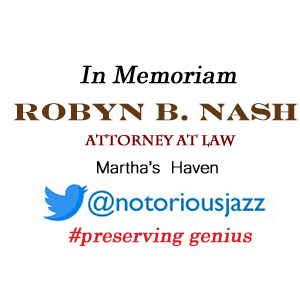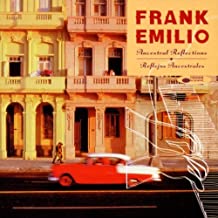
Daily Dose Of Jazz…
Frank Emilio was born Francisco Emilio Flynn Rodríguez on April 13, 1921 in Havana, Cuba to an American father and Cuban mother. Despite being blinded at birth due to damage to his eyes by the doctor’s forceps, unable to distinguish shapes as a child he became totally blind by his late teens. Orphaned at age five he was raised by his aunt and uncle. At 13 years old, he won an amateur music contest and shortly after began to play danzones by Antonio María Romeu. In 1938 he interrupted his career to complete his studies at a school run by Cuba’s National Association for the Blind.
During the 1940s, Flynn became part of the filin music scene which comprised jazz-influenced bolero composers. He accompanied singer Miguel de Gonzalo. In 1946 he founded the Loquibambia ensemble together with guitarist and composer José Antonio Méndez, and they started to work for the Mil Diez radio station. By 1949 they accompanied the famous Conjunto Casino in the recording of their song Átomo. Two years later he founded Los Modernistas, and played at Radio Cadena Habana, toured the island before disbanding. Flynn then joined a son ensemble, Alejandro y sus Muchachos, and in 1955 he recorded four songs with Arcaño y sus Maravillas.
By the late Fifties he would go on to pioneer small-ensemble Cuban jazz. After the Cuban Revolution, the members of the Quinteto Instrumental remained in Havana, playing and recording. In the late 1970s and 1980s, his band expanded and recorded their debut album. During the 1990s Flynn recorded several albums including Barbarísimo, Tribute to Ernesto Lecuona and A Tiempo de Danzón for Milan/RCA Records, and Ancestral Reflections for Blue Note. In 1998 he made his American debut, with Los Amigos, in a Jazz at Lincoln Center gig and the following year he reunited with his American relatives.
Between 2000 and 2001 he spent much of his time with his relatives in California, where he played live occasionally and gave lectures at California State University, Los Angeles. Pianist Frank Emilio, who played danzas, danzones, filin, descarga, and Afro-Cuban jazz, passed away on August 23, 2001 in Havana.
More Posts: bandleader,history,instrumental,jazz,music,piano
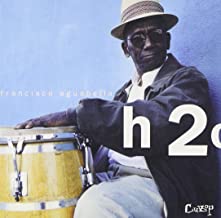
Daily Dose Of Jazz…
Francisco Aguabella was born on October 10, 1925 in Matanzas, Cuba. Demonstrating a special aptitude for drumming at an early age, he was initiated into several Afro-Cuban drumming traditions, including batá, iyesá, arará, olokún, and abakuá. Aguabella also grew up with rumba.
He is one of a handful of Cuban percussionists who came to the United States in the 1940s and 50s. In the 1950s, he left Cuba to perform with Katherine Dunham in the Shelley Winters film Mambo filmed in Italy. He immigrated to the United States in 1953, performing and touring with Peggy Lee for the next seven years.
During his long career, he performed in Europe, Australia, South America, and throughout the United States, including the White House. Aguabella enjoyed extensive music performing and recording careers, delighted many audiences with his masterful and powerful rhythms.
Francisco performed with many great jazz artists such as Dizzy Gillespie, Tito Puente, Mongo Santamaria, Frank Sinatra, Peggy Lee, Eddie Palmieri, Cachao, Lalo Schifrin, Cal Tjader, Nancy Wilson, Poncho Sanchez, Bebo Valdes, Carlos Santana, and numerous others. He is featured in two documentaries, Sworn to the Drum and Aguabella. He has also appeared with his ensemble on television programs.
During the Seventies, he was a member of the Jorge Santana Latin rock band Malo. Francisco was a widely recognized master conguero and bata artist, a caring and knowledgeable instructor. Aguabella was a faculty member at the annual Explorations in Afro-Cuban Dance and Drum workshop hosted by the Humboldt State University Office of Extended Education in Arcata, California. While living in Los Angeles, California, he taught Afro-Cuban drumming to undergraduate and graduate students at the University of California, Los Angeles.
A prolific session musician and recorded seven albums as a leader, throughout his career, he played congas, bata, quinto, coro, shekere, drums, claves, bongos, timbales, cajon, and other assorted percussion instruments. Percussionist Francisco Aguabella, who received a National Heritage Fellowship from the National Endowment for the Arts, passed away in Los Angeles on May 7, 2010 of a cancer-related illness.
More Posts: bandleader,history,instrumental,jazz,music,percussion
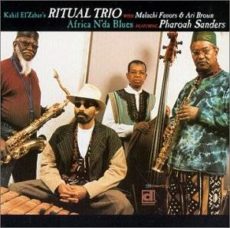
Daily Dose Of Jazz…
Kahil El’Zabar was born on November 11, 1953 in Chicago, Illinois and attended Lake Forest College before joining the AACM, Association for the Advancement of Creative Musicians in the early 1970s. He would go on to become its chairman in 1975.
During the 1970s, he formed the musical groups Ritual Trio and the Ethnic Heritage Ensemble, both of which have remained active. Kahil has collaborated include Dizzy Gillespie, Stevie Wonder, Nina Simone, Cannonball Adderley, and Paul Simon.
The multi-instrumentalist, Kahil El’Zabar, who is mainly a percussionist and composer, regularly records for Delmark Records. As a leader and co-leader he has released eight albums, fourteen with the Ensemble, 14 with the Trio, two with the group Tri-Factor and has recorded four as a sideman with David Murray and Wadada Leo Smith. He continues to perform, compose and record.
More Posts: percussion
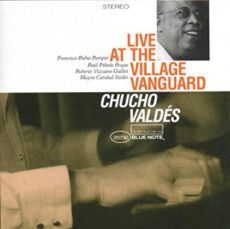
Daily Dose Of Jazz…
Raul Pineda was born on November 5, 1971 in Havana, Cuba. As a young boy, he scoured his neighborhood for anything that could be used to create drums. He used metal rods driven into the ground to support used cooking oil cans, and formed drumsticks from the branches of orange trees. He was influenced by the local rumbero street bands, and at the urging of his musician grandfather, Nefer Miguel Milanés, he went on to study classical percussion for several years. He then immersed himself in Afro-Cuban music.
By 19, Raul was performing and recording with some of the leading Cuban ensembles and bandleaders, including Sentisis, and pianist Chucho Valdés. Over the next several years, international tours and Grammy-nominated recordings brought Raul to the music world’s attention as one of Cuba’s most influential young drummers. He blends a drum kit with percussion instruments, such as, the left foot cowbell.
Staying busy playing and recording with several bands and artists, since 2000, he has been playing with the Afro-Cuban-jazz-funk-rock band TIZER and with Latin superstar Juan Gabriel. Between the two bands he will have toured Venezuela, Colombia, Mexico, Dubai, Barbados, Aruba, Santiago de Chile, South Africa, Russia and South Korea.
Drummer Raul Pineda has garnered three Grammy nominations and a 2000 Grammy Award for Best Latin Jazz Performance with the Chucho Valdés Quartet album, Live at the Village Vanguard. He continues to perform and record.
More Posts: drums,percussion
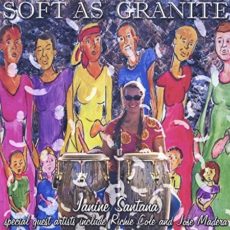
Daily Dose Of Jazz…
Janine Santana was born January 28th in Brooklyn, New York of Puerto Rican and Finnish ancestry and spent her childhood in Brooklyn and youth in Trenton, New Jersey. She developed a love for Afro-Cuban/ Caribbean traditions and Jazz and began working and studying as a professional actor at a very young age, long before studying music at Aims Community College.
A 1994 move to Denver, Colorado focused her more on performance, music recording and broadcasting. She leads a 6-12 piece Latin Jazz Ensemble and her well received 2009 recording Soft as Granite had Janine working with alto saxophonist Richie Cole, trumpeters Greg Gisbert and Brad Goode, and arranger/percussionist José Madera.
Conguera, percussionist, leader, arranger, studio musician, broadcaster, artist, designer, writer and actor Janine Santana currently continues to perform, record and collaborating with generations of jazz and Latin jazz musicians on a brand new project with the likes of Luques Curtis, Bobby Porcelli, David Amram, Jose’ Madera on timbales and arrangements, Ricky Gonzalez as producer/pianist/arranger and Ray Vega on trumpets.
![]()
#preserving genius
More Posts: conga,percussion


